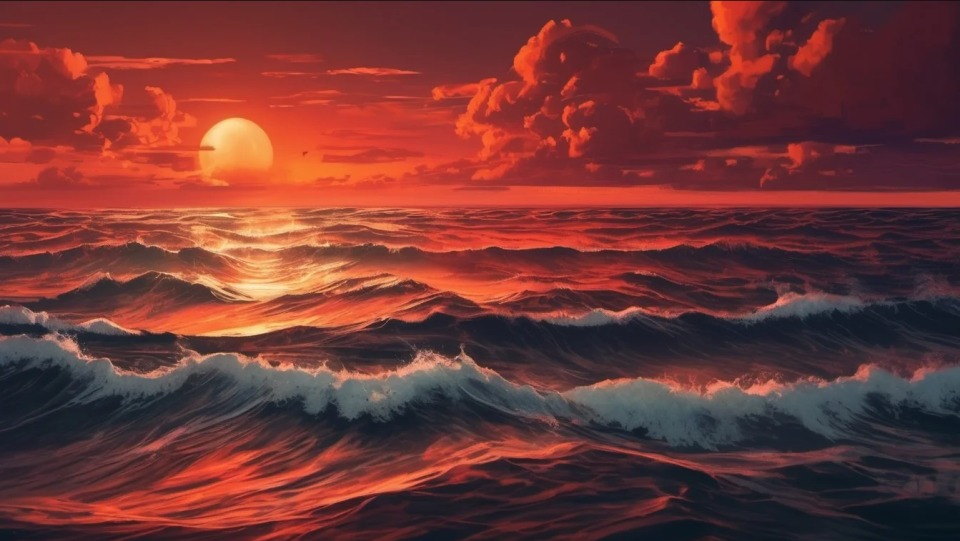Recent reports that the James Webb Space Telescope (JWST) has detected signs of life on a distant planet outside the solar system are unfortunately a bit premature. This is the result of research conducted by scientists from the University of California Riverside (UCR).
Although it is likely to disappoint all of us enthusiastic about confirmation of extraterrestrial life, this does not mean that JWST cannot find traces of life in the atmosphere of an extrasolar planet or “exoplanet” in the future.
The latest excitement over the potential detection of signs of life on an exoplanet began in 2023, when JWST detected elements of potential “biosignatures” in the atmosphere of exoplanet K2-18 b, a super-Earth located about 120 light-years from Earth.
While many exoplanets are extreme, violent, or at least “alien” in nature—whether blasted by intense radiation from their stars, having a solid surface, or being frozen debris at the edge of their systems—K2-18 b was seductive. It is our target in the search for life because it is quite similar to our planet.
Relating to: James Webb Space Telescope predicts clouds of molten rock on this ultra-hot exoplanet
An Earth-like ocean world
K2-18 b is two to three times as wide as Earth and 8.6 times the mass of our planet. It is also located in the habitable zone of its star; This region is neither too hot nor too cold to support liquid water. The exoplanet is therefore theorized to be an ocean or “hycean” world filled with liquid water, a vital ingredient for life as we know it. But unlike Earth, this exoplanet’s atmosphere appears to consist predominantly of hydrogen rather than nitrogen.
“This planet receives almost the same amount of solar radiation as Earth. And if the atmosphere was eliminated as a factor, K2-18 b would have a temperature close to that of Earth, making it an ideal situation for finding life,” the team member said. UCR project scientist Shang-Min Tsai said in a statement.
The main result of the 2023 K2-18 b survey carried out by Cambridge University scientists using the James Webb Space Telescope was the discovery of carbon dioxide and methane. The detection of these molecules without a trace of ammonia indicated that this must indeed be a hycean world, with a vast ocean under a hydrogen-rich atmosphere. But there was also a hint of something else; Something very exciting.

“The icing on the cake in terms of the search for life was that last year these researchers reported the tentative detection of dimethyl sulfide, or DMS, in the atmosphere of that planet, produced by ocean phytoplankton on Earth.” said Tsai. This means that if DMS is accumulating to detectable levels, there must be something on K2-18 b, possibly a life form, producing it 20 times faster than what is found on Earth.
There’s icing on the Super Earth cake, but can we eat it?
But as the detection of DMS remained inconclusive, even the investigation’s team leader, Cambridge University scientist Nikku Madhusudhan, called for caution in the discovery of DMS. Future JWST observations will be needed to confirm K2-18 b’s presence in its atmosphere, he said, but not everyone got the memo.
However, the inconclusive nature of the DMS detection also led the UCR team to follow up on the detection.
“The DMS signal from JWST was not very strong and only showed up in certain patterns when analyzing the data,” Tsai said. “We wanted to know if we could be sure about something that seemed like a clue about DMS.”
What this second team found, with their computer models describing hydrogen-based atmospheres and the physics and chemistry of DMS, was that the original data were unlikely to point to the detection of DMS. “The signal overlaps strongly with methane, and we think that separating DMS from methane is beyond the capability of this device,” Tsai said.
This means that JWST must look at the world with instruments other than NIRISS (Near Infrared Imager and Slitless Spectrograph) and NIRSpec (Near Infrared Spectrograph), which were used to conduct the first survey to detect clues of DMS. Fortunately, Madhusudhan’s team continues to observe K2-18 b with JWST’s other primary instrument, MIRI (Mid Infrared Instrument), as researchers gather more information about environmental conditions on the exoplanet.
“The best biosignatures on an exoplanet can differ significantly from those we find most abundant on Earth today,” said team leader and UCR astrobiologist Eddie Schwieterman. “On a planet with a hydrogen-rich atmosphere, we may be more likely to find DMS produced by life rather than oxygen produced by plants and bacteria as on Earth.”
RELATED STORIES:
— James Webb Space Telescope detects neutron star hiding in supernova debris
—James Webb telescope detects oldest thread ever seen in ‘cosmic web’
— James Webb Space Telescope sees Earendel, the farthest known star in the universe
Is this slight disappointment a setback for scientists searching for signs of life in the universe? This is not a fluke and does not overshadow the importance of the initial investigation as a step forward in our understanding of hycean worlds, which are some of the most promising targets in this research.
“Why do we continue to explore the universe to find signs of life?” Tsai asked rhetorically. “Imagine you’re camping in Joshua Tree at night and you hear things. Your instinct is to shine a light to see what’s there. In a way, that’s what we’re doing.”
The new study discussing these findings was published May 2 in The Astrophysical Journal Letters.